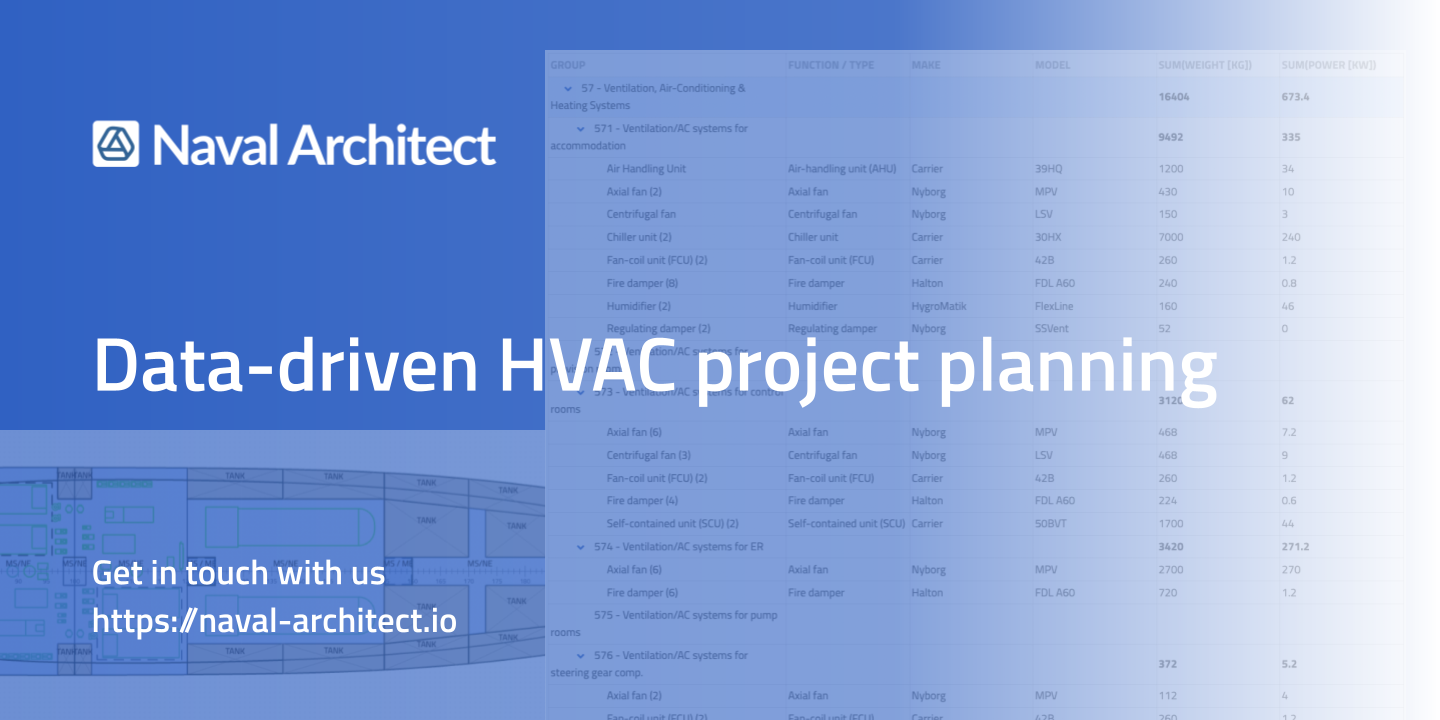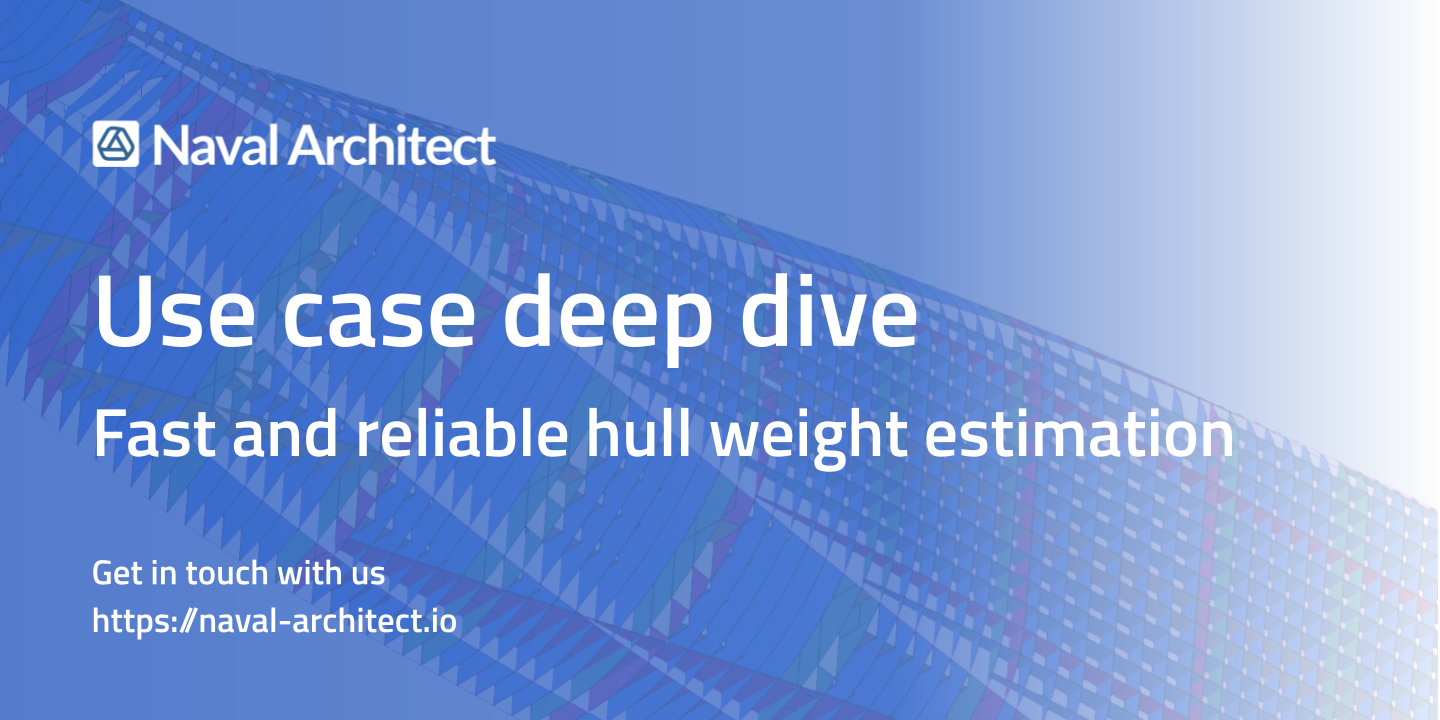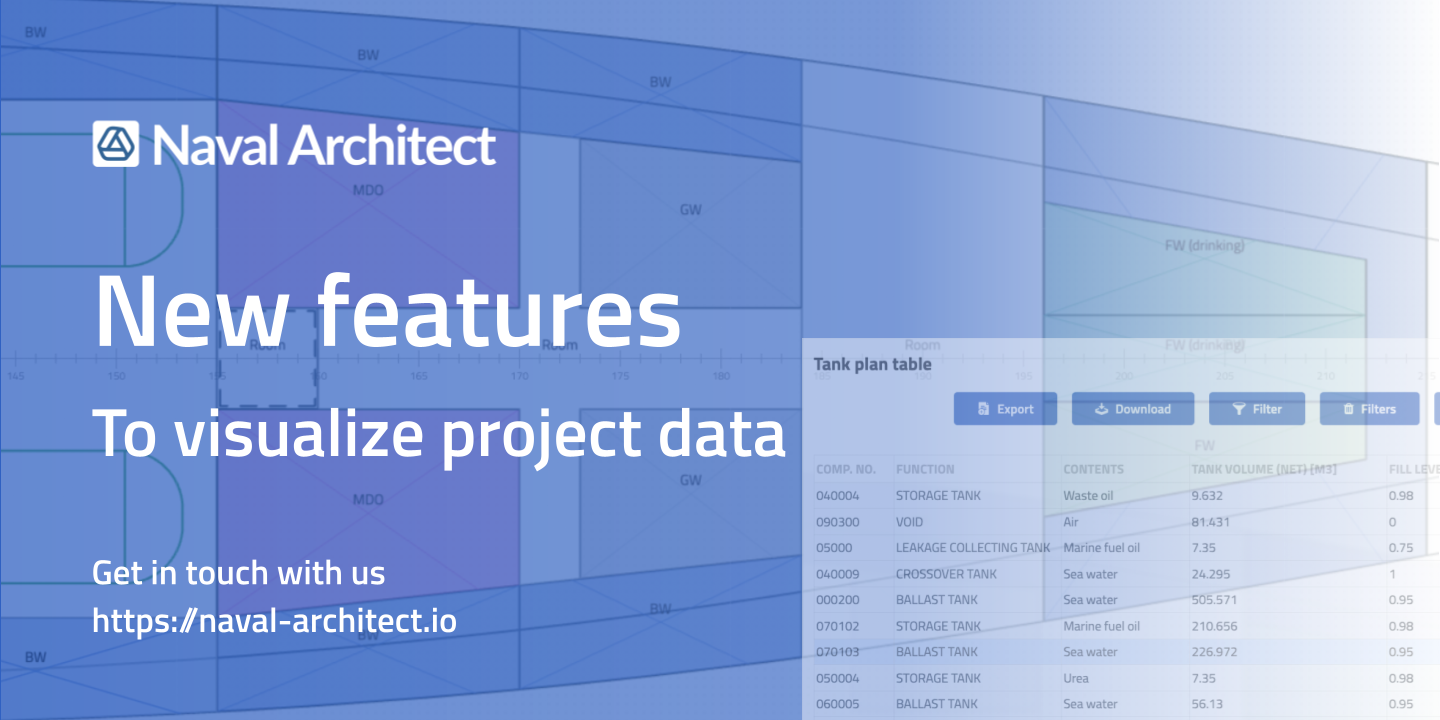Heating, Ventilation, and Air Conditioning (HVAC) are one of the most complex and widespread, yet…
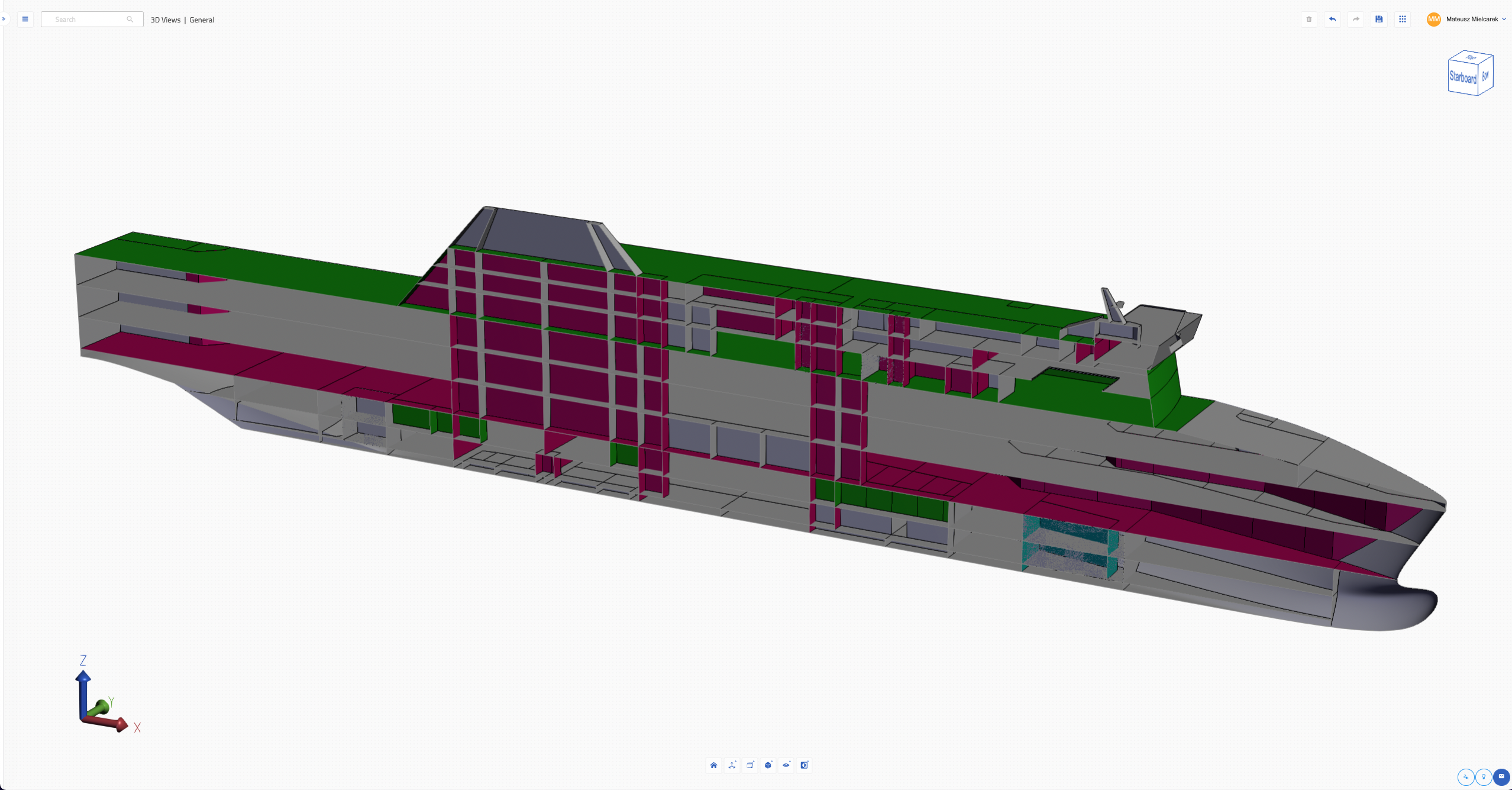
Efficient estimations in ship design
Naval Architect is a web-based cloud platform for the shipbuilding industry based on a 5D General Arrangement (5DGA). The model serves as an easy-to-use, customizable database that enables efficient estimations in ship design. In this article, we show actual examples of workflows that can be used to perform reliable estimations at very early stages of the design process.
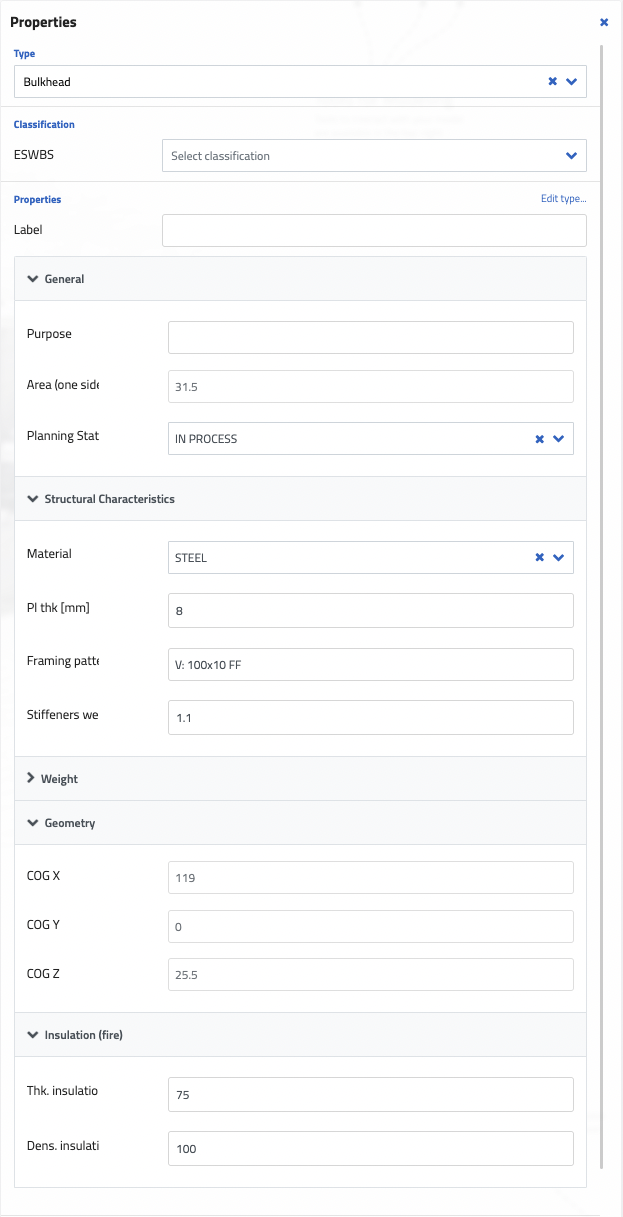
The problem of today
When a new project starts, a design development team typically works with a first draft of the General Arrangement Plan (GAP) and a template or a copy of a building specification of a similar vessel from the portfolio. That’s already two documents you have to deal with! That’s not very practical if you have limited time and resources. Also, the GAP is usually a simple AutoCAD drawing, which means you have to measure areas, lengths, heights and volumes, and many other things by hand, which is a pretty time-consuming process! Plus, both documents change significantly as the design progresses, so you have to measure again. And last but not least, you constantly run the risk of overlooking changes, which can be very expensive afterwards.
Efficient estimations in ship design
Imagine if you could take the GAP, make it in 3D, and combine it with your building specification from the beginning. It’s easy to imagine that in such a situation it should be easy to estimate the weight of the ship or the amount of a particular material needed to build it. We take the geometric properties, such as the areas and volumes mentioned above from the 3D model, and multiply them by the properties of certain ship components, such as their thickness, density, and so on. The result is the volumes and weights of the materials that make up our ship. As the design progresses and team members make changes to the geometry, all these calculations automatically update. Sounds like a pipe dream, but it’s not! This is the core function of Naval Architect.
Estimates for weights, costs, and other metrics are set once and automatically updated with each design iteration.
How do we do that?
In Naval Architect you create a 3D model from the beginning, but this is no more effort than creating a GAP in AutoCAD. The 3D part is mostly introduced automatically. In this video, you’ll learn more about how modeling works in Naval Architect and how it compares to AutoCAD. Ok, this is a 3D model that calculates all the geometric properties. But how does the data layer work?
The user can configure each piece of geometry to represent a specific type. For example, a bulkhead, a deck, a room, a tank, or anything else, more or less detailed, whatever is needed. The geometry of a particular type can have a number of user-defined properties, such as the wall thickness, frame pattern, insulation thickness, fire rating, and so on.
You determine what you want to know about what things and how you use that information to estimate weights, costs, and many other needed project characteristics.
Properties can interact in the form of expressions to calculate what you want to know! You can access them in the platform through Reports and Breakdown structures. You can also download the tables in MS Excel format at any time. More about the Reports in this article.
We have two video examples of how this works. In the first video, we use the area of the hull components, their thickness, and the frame pattern to calculate the total weight and COG of the hull. In the second video, we calculate the weight of the ship’s insulation using the same model.
UPDATES WITH EACH DESIGN ITERATION
Lastly, it’s important to mention that every time you change your design, everything is automatically recalculated. Each update provides instant results, allowing for accurate and efficient estimations in the ship design from the very beginning of the process.
TRY US!
Interested? Book your free discovery call here, get to know our team and tell us about your needs!


